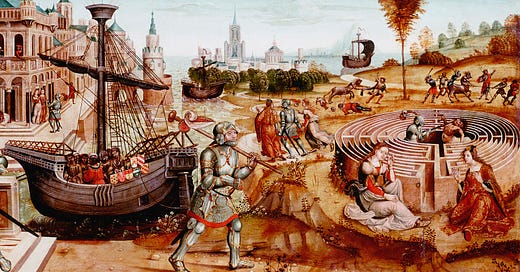Introduction to the Paradox
The concept of the Ship of Theseus presents a captivating philosophical thought experiment. It originates from ancient Greece and poses a fundamental question about identity and continuity. The experiment asks: if all components of an object, like a ship, are replaced over time, does it remain the same object? This paradox delves into the essence of identity, challenging our understanding of what it means for something to be the same.
The Historical Context
The Ship of Theseus is more than a mere thought experiment; it has a rich historical context. According to Plutarch, the Athenians maintained the ship used by Theseus by replacing its decaying parts over time. This process of continual repair and replacement raises the philosophical dilemma: was the ship that the Athenians preserved over centuries still the original Ship of Theseus?
Philosophical Implications
This paradox has broad implications in the study of philosophy, particularly concerning identity and change. It prompts us to question how we define an object's identity: is it by its form, its function, its continuity over time, or the material of which it is composed?
The Biological Analogy
Drawing a parallel to biology, we can consider our own bodies as ships of Theseus. Human cells are continually replaced, yet we consider ourselves the same individual throughout our lives. This raises intriguing questions about personal identity and continuity. Are we defined by our physical components, our memories, or something else entirely?
Collective Identity in Civilizations
Extending the concept to civilizations, we can explore how societies evolve while maintaining a sense of continuity. Civilizations undergo changes in culture, technology, and governance, yet often retain a core identity. This poses the question: how do collective memories and shared histories contribute to the persistence of a civilization's identity?
Preservation of Ancient Monuments
This paradox also reflects in the preservation of ancient monuments. As we conserve historical structures, replacing worn-out bricks, tiles, and applying new paint, we grapple with a similar dilemma. Do these monuments remain the same despite the new materials? This act of preservation echoes the Ship of Theseus, as each restoration effort aims to maintain the essence and integrity of the original structure, yet it introduces new elements that change its physical composition.
The USS Constitution: A Modern Analogy
The USS Constitution, famously known as "Old Ironsides," presents a modern-day example of the Ship of Theseus paradox. Since its inception in 1794, the USS Constitution has undergone extensive repairs, modifications, and reconstructions. As per the Antique and Classic Boat Society, despite the replacement of its original wood, the USS Constitution is not considered a replica but remains "Old Ironsides." This case exemplifies how the essence of an object can be perceived to persist, despite comprehensive material changes, thereby resonating with the core question of the Ship of Theseus.
"The More Things Change, the More They Stay the Same"
The adage "the more things change, the more they stay the same" resonates deeply with the Ship of Theseus paradox. It suggests that despite superficial changes, the underlying essence of an object, individual, or civilization remains constant. But is this a simplification of the complex nature of identity and change?
Conclusion
The Ship of Theseus remains a profound and enduring thought experiment. It challenges us to contemplate the nature of identity, continuity, and change, both in individual and collective contexts. As we navigate through transformations, both personal and societal, the paradox serves as a reminder of the complexity and intricacy of defining what remains the same and what changes.






But I gained a lot of clarity from your sagacious comment – but the fact remains that although DNA may not change, a person may change, in his thinking, attitude and psyche.
Very thoughtful and engaging piece. My first response is like this: An entity remains the same as long as its basic design on the drawing board remains the same. A ship is the development of its drawing board design. Likewise a human being is her DNA design which is unique to her. The looks, or frame of the human being is not frozen in time but is subject to its initial DNA programming that is almost frozen. In fact, even if slight changes in DNA are carried out in some future for medical purposes, still the human being will remain the same. What does that mean? Like a computer, which is known by the computing power of its CPU, the human being is known by her traits, memory, accumulated history (experience) her behaviour (though it may not be as predictable as that of a computing machine). Yet to the the world she is known by her outer looks, her colour, her height, though all or some of them keep on changing drastically with age. You would identify your iPhone with its looks or wallpaper but actually the iPhone is what information it has. (Of course, iPhones or other such machines do not have the kind of uniqueness that human beings have, in spite of the fact that all humans are the same 🤔🤔).
I started with some clarity. But am ending as clueless as the ship herself.